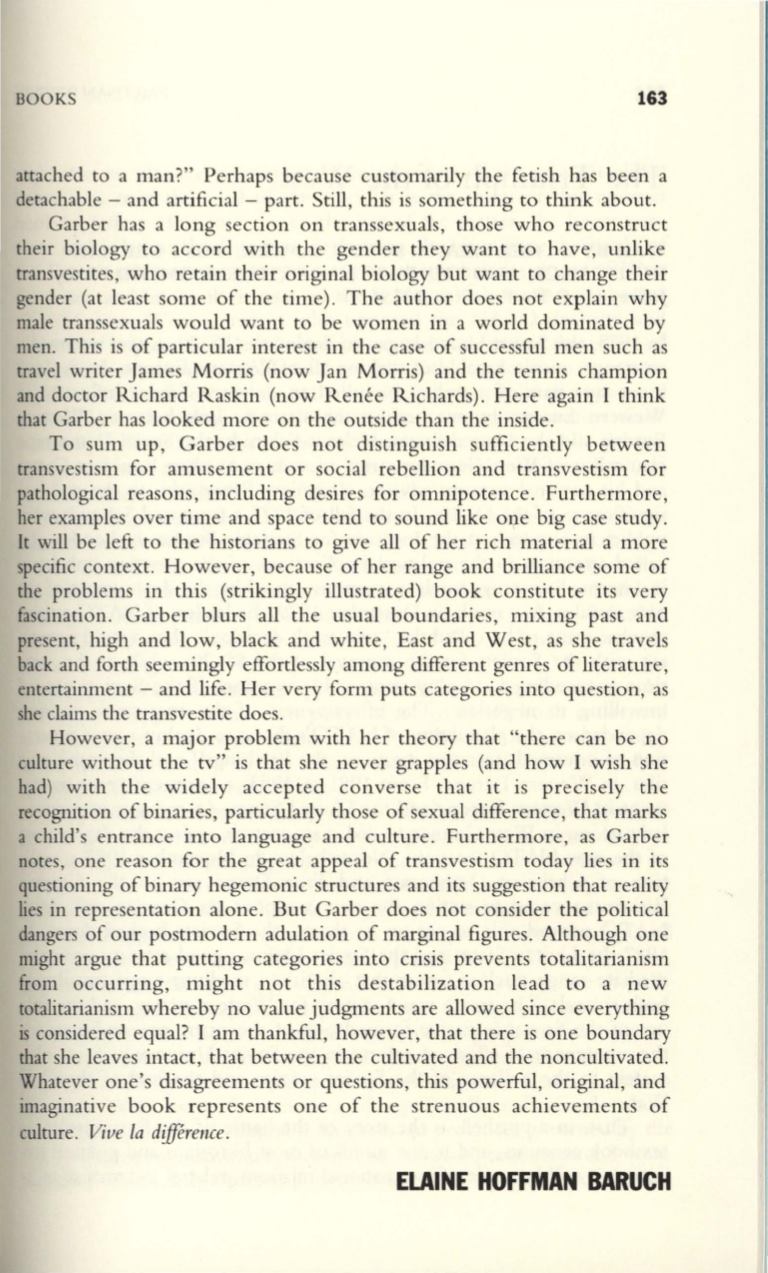
BOOKS
163
attached to a man?" Perhaps because customarily the fetish has been a
detachable - and artificial - part. Still, this is something to think about.
Garber has a long section on transsexuals, those who reconstruct
their biology to accord with the gender they want to have, unlike
transvestites, who retain their original biology but want to change their
gender (at least some of the time). The author does not explain why
male transsexuals would want to be women in a world dominated by
men. This is of particular interest in the case of successful men such as
travel writer James Morris (now Jan Morris) and the tennis champion
and doctor Richard Raskin (now Renee Richards). Here again I think
that Garber has looked more on the outside than the inside.
To sum up, Garber does not distinguish sufficiently between
transvestism for amusement or social rebellion and transvestism for
pathological reasons, including desires for omnipotence . Furthermore,
her examples over time and space tend to sound like one big case study.
It
will be left to the historians to give all of her rich material a more
specific context. However, because of her range and brilliance some of
the problems in this (strikingly illustrated) book constitute its very
fascination. Garber blurs all the usual boundaries, mixing past and
present, high and low, black and white, East and West, as she travels
back and forth seemingly effortlessly among different genres of literature,
entertainment - and life. Her very form puts categories into question, as
she claims the transvestite does.
However, a major problem with her theory that "there can be no
culture without the tv" is that she never grapples (and how I wish she
had) with the widely accepted converse that it is precisely the
recognition of binarie , particularly those of sexual difference, that marks
a child's entrance into language and culture. Furthermore, as Garber
notes, one reason for the great appeal of transvestism today lies in its
questioning of binary hegemonic structures and its suggestion that reality
lies in representation alone. But Garber does not consider the political
dangers of our postmodern adulation of marginal figures . Although one
might argue that putting categories into crisis prevents totalitarianism
from occurring, might not this destabilization lead to a new
totalitarianism whereby no value judgments are allowed since everything
is considered equal? I am thankful, however, that there is one boundary
that she leaves intact, that between the cultivated and the noncultivated.
Whatever one's disagreements or questions, this powerful, original, and
imaginative book represents one of the strenuous achievements of
culture.
Vive La diff"erence.
ELAINE HOFFMAN BARUCH


